Complete Solutions to Exercise of chapter GEOMETRICAL OPTICS of Class 11 book with complete answers and questions
| Class 11 | PHYSICS |
| Chapter | GEOMETRICAL OPTICS |
| RESONANCE | Exercise |
| Number Of Questions | 63 |
| Academic Year | 2023-24 |
The distance of an object from the pole of a concave mirror is equal to its radius of curvature. The image must be:
View SolutionTwo plane mirrors are inclined at `70^@`. A ray incident on one mirror at incidence angle `theta` after reflection falls on the second mirror and is reflected from there parallel to the first mirror, The value of `theta` is
View SolutionA person AB of height 170 cm is standing in front of a plane mirror. His eyes are at height 164 cm. At what distance from P should a hole be made in mirror so that he cannot see his hair?
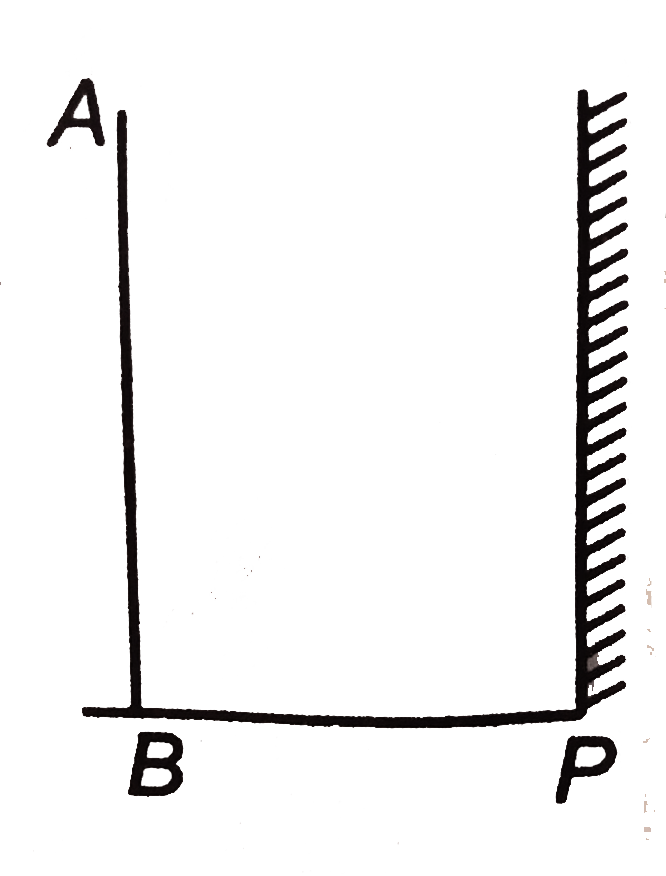
View SolutionThe figure shows two parallel plane mirrors placed 10cm apart. An object O is placed 7cm from mirror `M_1`. Then the distance of final image formed from mirror `M_1` is:
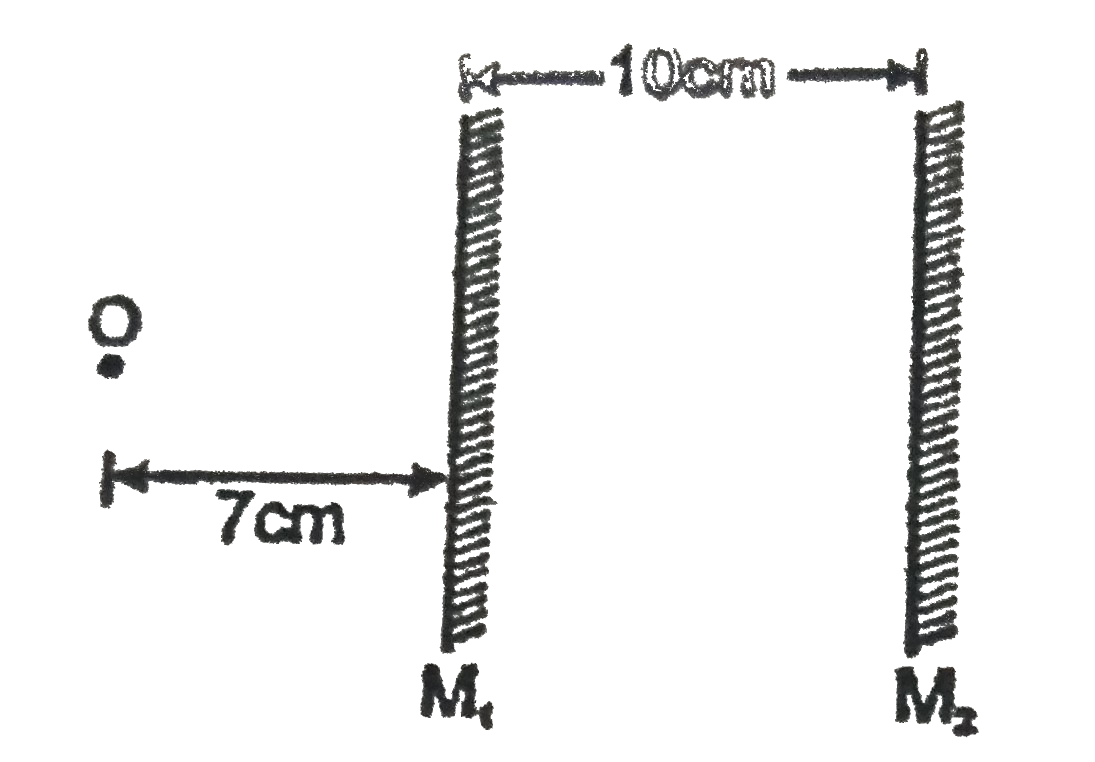
View SolutionA luminous point object is moving along the principal axis of a concave mirror of focal length 12 cm towards it. When its distance from the mirror is 20 cm its velocity is 4 cm/s. the velocity of the image in cm/s at that instant is
View SolutionAB is an incident beam of light and CD is a reflected beam (the number of reflections for this may be 1 or more than 1) of light. AB and CD are separated by some distance (may be large). It is possible by placing what type of mirror on the right side.
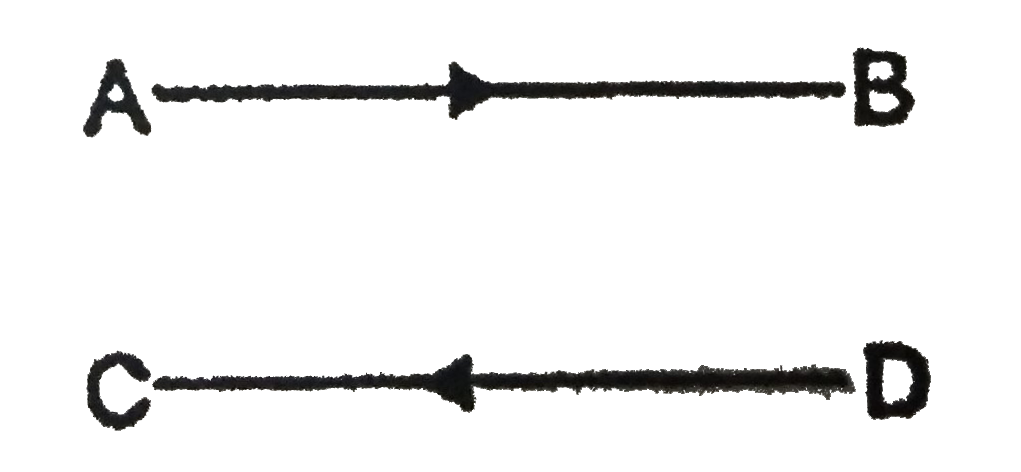
View SolutionThe relative refractive index of glass with respect to a material is 0.9 and the absolute refractive index of glass is 1.512. The refractive index of the material is
View SolutionIn the figure shown `sin i/sin r` is equal to
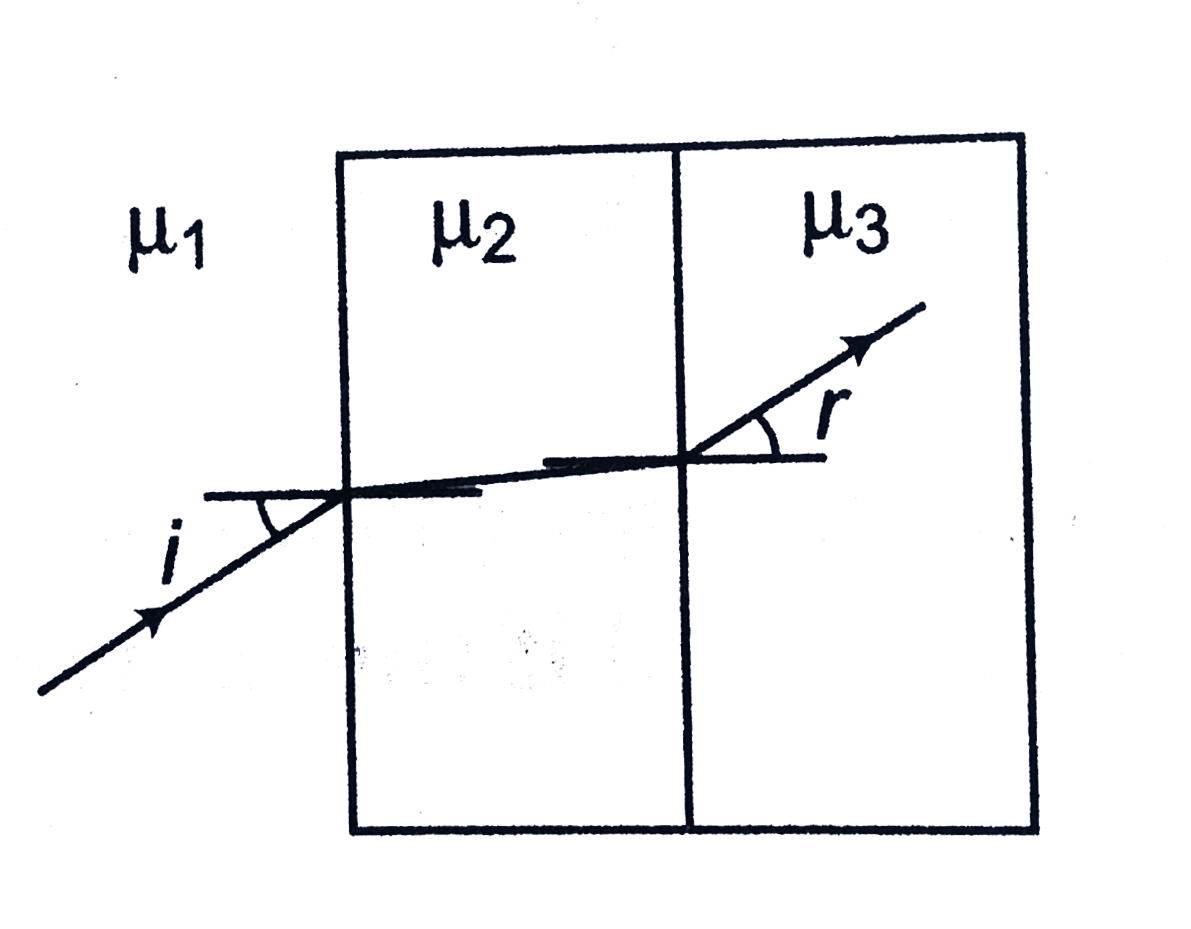
View SolutionThe critical angle for a light travelling from medium A into medium B is `theta`. The speed of light in medium A is v, the speed of light in medium B is
View SolutionA transparent cylinder has its right half polished so as to act as a mirror. A paraxial light ray inciden from left, that is parallel to the principal to the incident ray as shown. The refractive index n of the material of the cylinder is
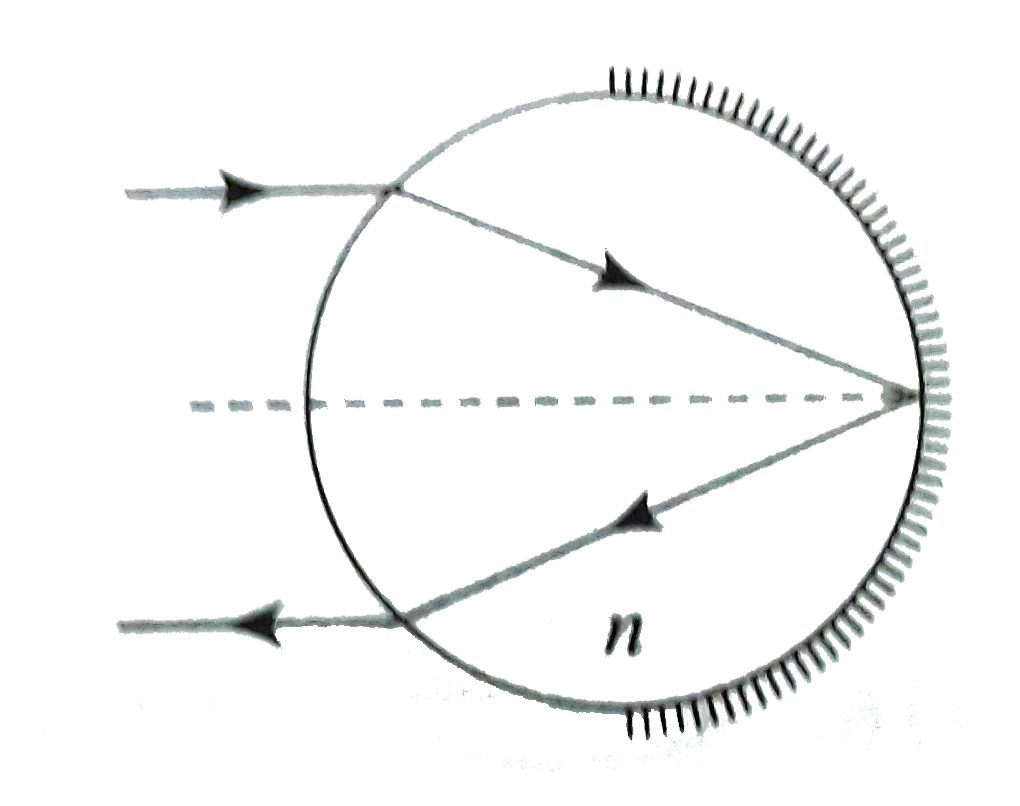
View SolutionA prism of refractive index `mu_g` deviates the incident ray towards its base. If it is immersed in a transparent liquid of refractive index `mu_1` such that `mu_1 gt mu_g` then prism would
View SolutionIf a prism having refractive index `sqrt(2)`, has angle of minimum deviation equal to the angle of refractive of the prism, then the angle of refractive of the prism is :
View SolutionA ray of light is incident at an angle of incidence `45^@` on an equilateral prism and emerge at an angle `45^@` then the refractive index of the medium of the prism is:
View SolutionOne half of a convex lens is covered with a black paper. Will this lens produce a complete image of the object? Verify your answer experimentally. Explain your observations.
View SolutionTwo diverging lenses are kept as shown in figure. The final image formed will be
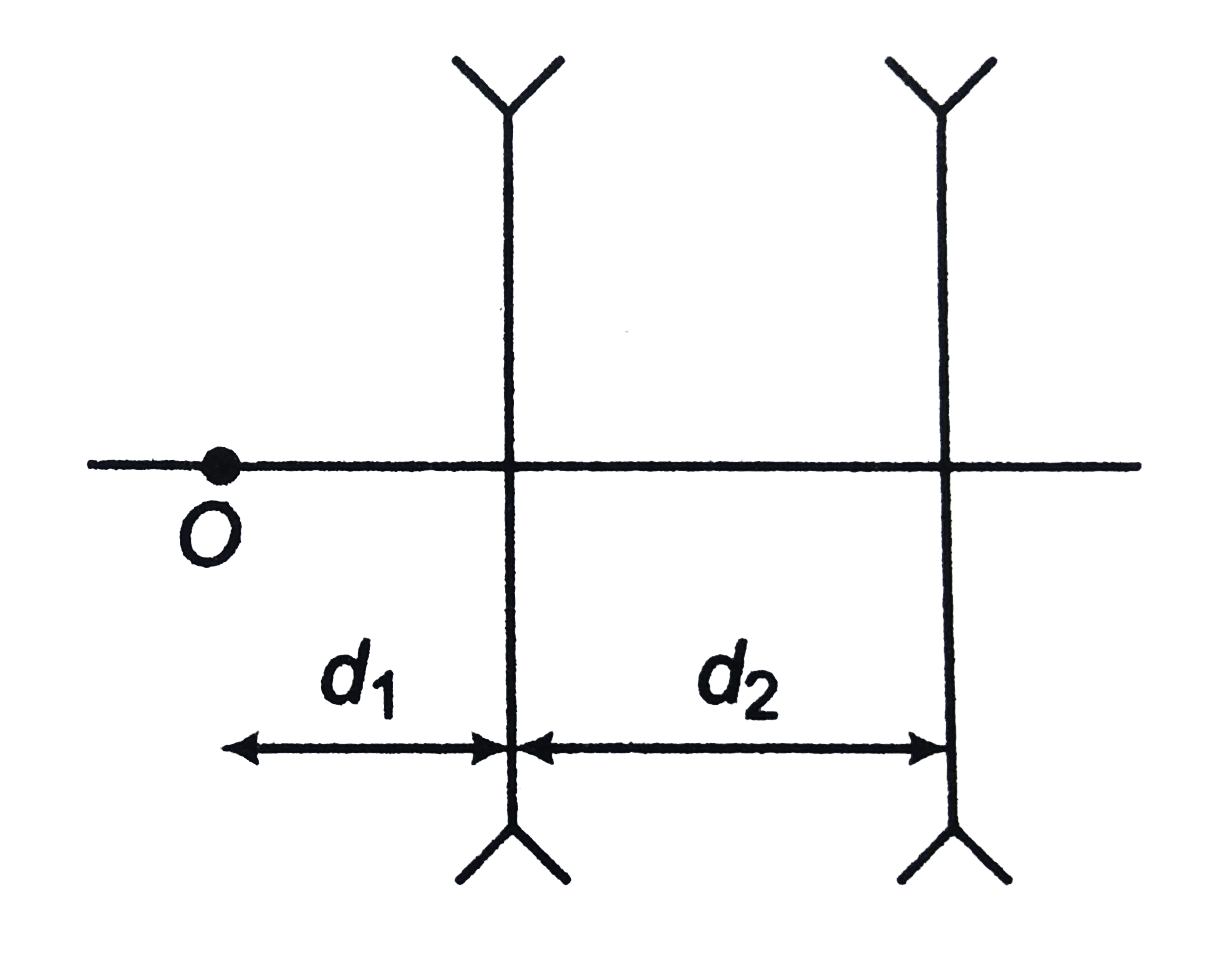
View SolutionIn the figure shown an object O is placed in front of a thin lens of small aperture. The dotted curves represent the extensions of the respective curves in the figure. How many images will be formed finally.
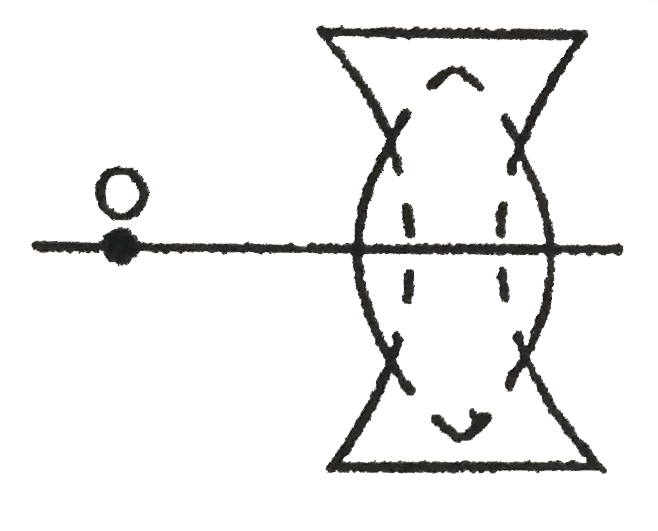
View SolutionIn the figure (i) a thin lens of focal length 10cm is shown. The lens is cut into two equal parts, and the parts are arranged as shown in the figure (ii). An object AB of height 1cm is placed at distance of 7.5cm from the arrangement. The height of the final image will be:
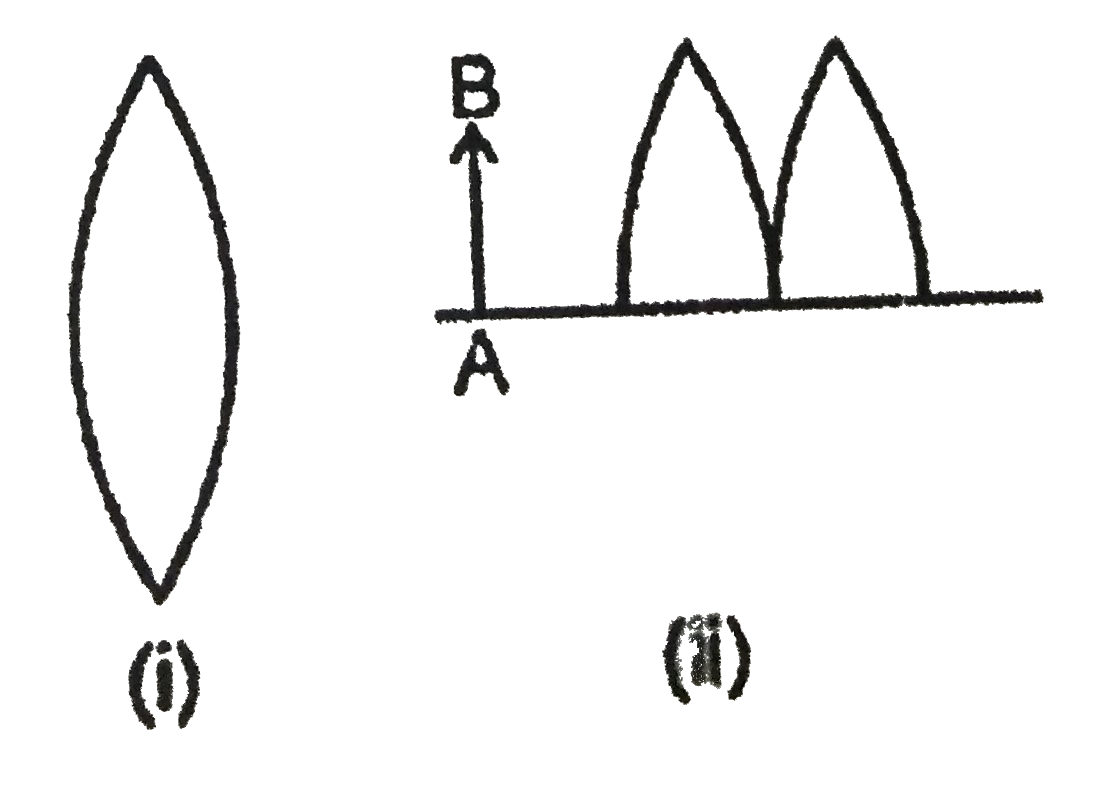
View SolutionA convex lens is cut into two parts in different ways that are arranged in four manners, as shown. Which arrangement will give maximum optical power?
View SolutionThe magnifying power of a telescope can be increased
View SolutionIn a compound microscope
View SolutionThe minimum magnifying power of a telescope is M. If focal length of its eye lens is halved, the magnifying power will become
View SolutionRainbow is caused due to
View SolutionMinimum number of prisms required to make a combination which is 'Achromatic' as well as 'Direct Vision' is:
View SolutionAll the listed things below are made of flint glass. Which one of these have greatest dispersive power (`omega`).
View SolutionAn astronomical telescope has a large aperture to
View SolutionWhich of the following is possible application of fibre optics?
View SolutionThe image formed by an objective of a compound microscope is
View SolutionTo get three images of a single object, one should have two plane mirrors at an angle of:
View SolutionThe angle of incidence at which reflected light is totally polarised for reflection from air to glass (refractive index n) is
View SolutionAn astronomucal telescope has an eyepiece of focal-length `5 cm` If the angular magnification in normal adjustment is `10` , when final image is at least distance of distinct vision `(25cm)` from eye piece, then angular magnification will be :
View SolutionA ray of light travelling in air is incident at grazing incidence on a slab with variable refractive index, n `(y)` `=[k y^(3//2)+1]^(1//2)` where `k=1 m^(-3//2)` and follows path as shown in the figure. What is the total deviation produced by slab when the ray comes out.
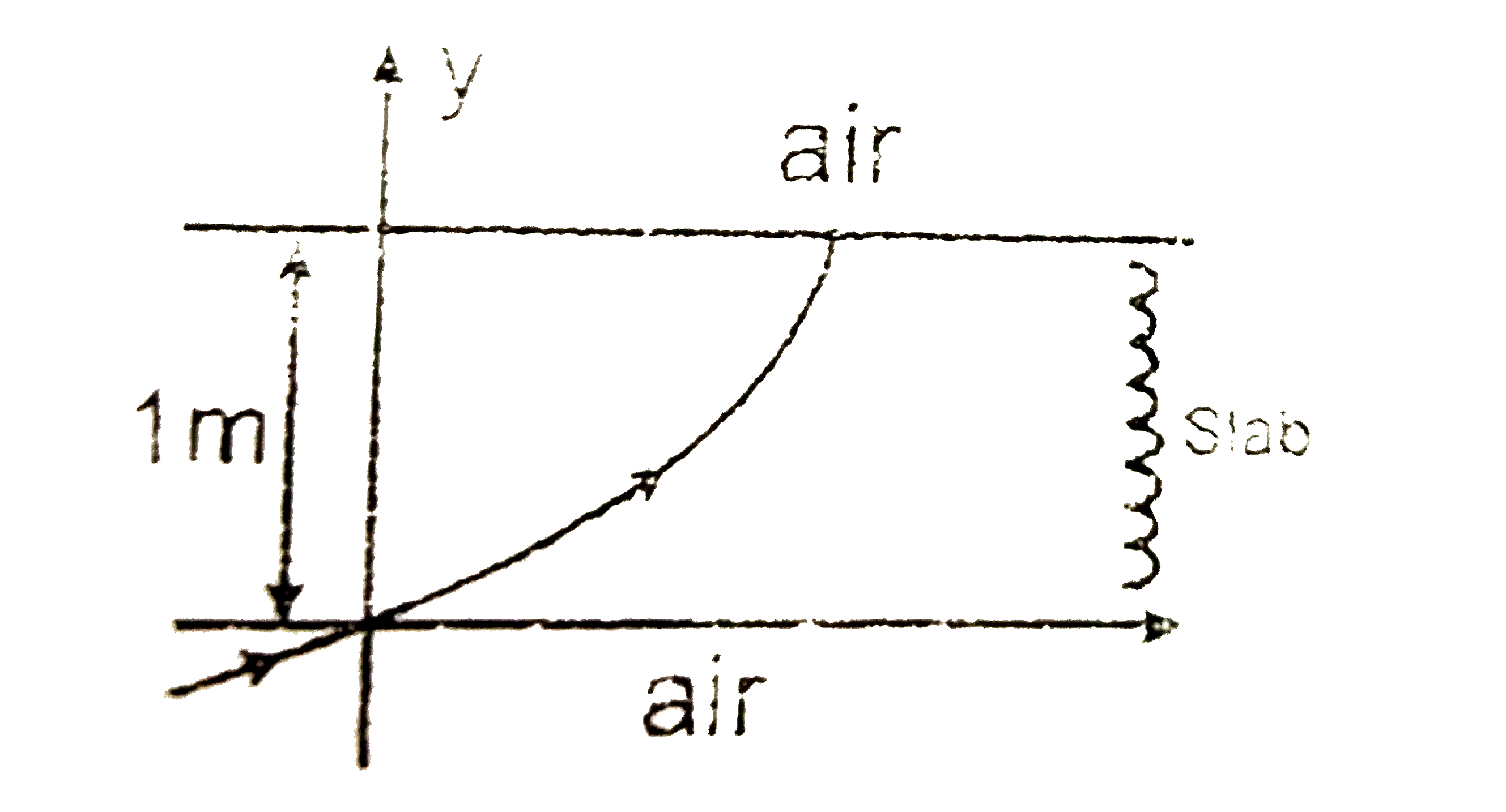
View SolutionA beam of light is converging towards a point `I` on a screen. A plane glass plate whose thickness in the direction of the beam `=t` , refractive index `=mu` , is introduced in the path of the beam. The convergence point is shifted by
A. `t(1-1/(mu))` away
B. `t(1+1/(mu))` away
C. `t(1-1/(mu))` nearer
D. `t(1+1/(mu))` nearer
View SolutionA prism having an apex angle `4^(@)` and refraction index 1.5 is located in front of a vertical plane mirror as shown in the figure. Through what total angle is the ray deviated after reflection from the mirror

View SolutionA plano-concave lens is placed on a paper on which a flower is drawn. How far above its actual position does the flower appear to be?

View SolutionA beam of diameter 'd' is incident on a glass hemisphere as shown. If the radius of curvature of the hemisphere is very large in comparison to d, then the diameter of the beam at the base of the hemisphere will be
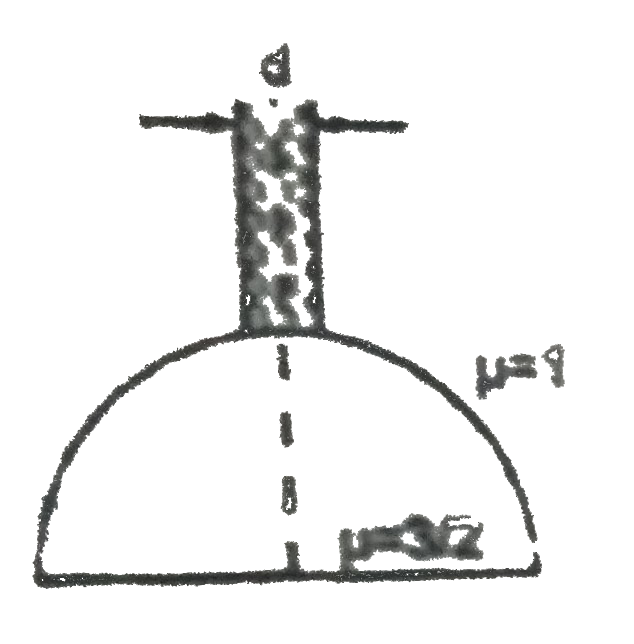
View SolutionA light ray I is incident on a plane mirror M. The mirror is rotated in the direction as shown in the figure by an arrow at freuqency `9//pi` rps. The light reflected by the mirror is received on the wall W at a distance 10 m from the axis of rotation. When the angle of incidence becomes `37^(@)`, the speed of the sopt (a point) on the wall is

View SolutionThe image formed by a concave mirror is twice the size of the object. The focal length of the mirror is 20 cm. The distance of the object from the mirror `is//are`
View SolutionFor the system as shown in the figure, the image formed by the concave mirror
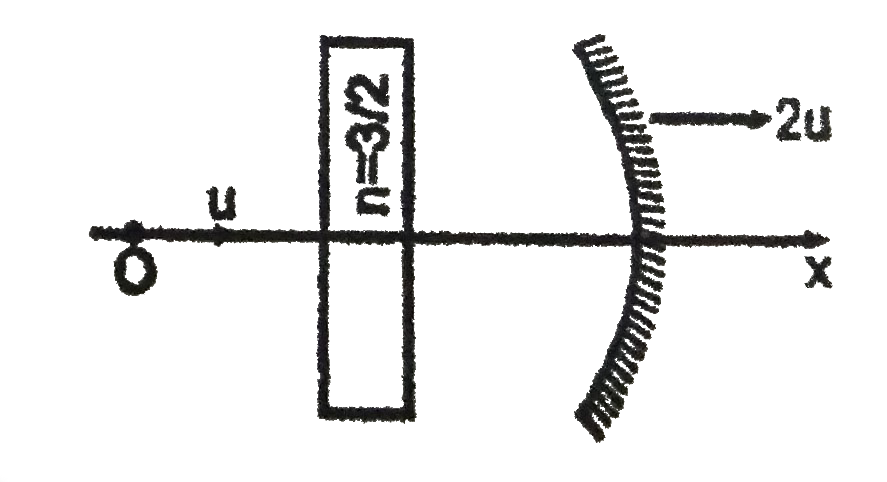
View SolutionIn Figure, light is incident at an angle `theta` which is slightly greater than the critical angle. Now, keeping the incident angle fixed a parallel slab or refractive index `n_(3)` is placed on surface AB. Which of the following statements are correct?
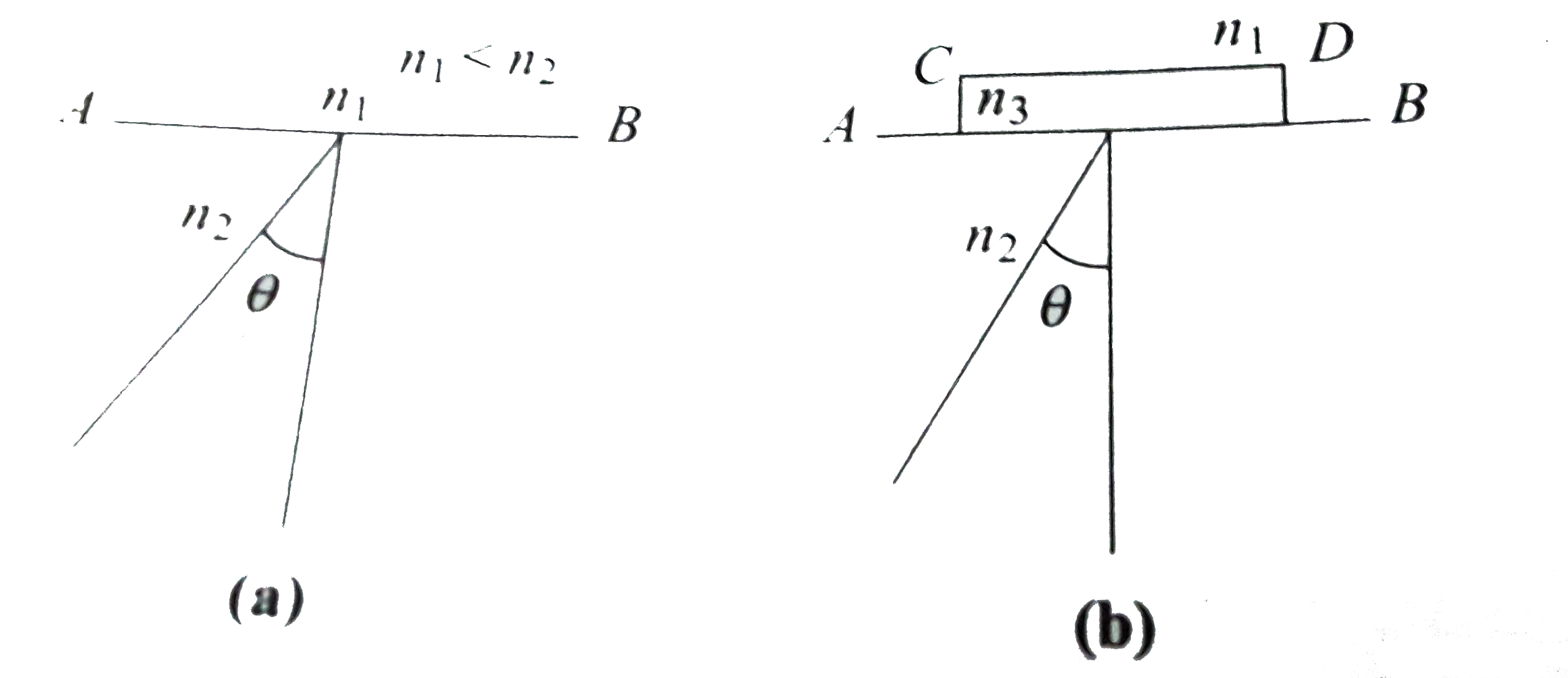
View SolutionAn equilateral prism deviates a ray through `45^(@)` for the two angles of incidence differing by `20^(@)`. The angle of incidence is
View SolutionA man is sitting in a room at 2m from a wall `W_1`, wants to see the full height of the wall `W_2` behind him 4m high and 6m away from the facing wall `W_1`. What is the minimum vertical length of mirror on the facing wall required for the purpose?
View SolutionA flint glass prism and a crown glass prism are to be combined in such a way that the deviation of the mean ray is zero. The refractive index of flint and crown glasses for the mean ray are 1.620 and 1.518 respectively. If the refracting angle of the flint prism is `6.0^@`, what would be the refracting angle of the crown prism ?
View SolutionA plane mirror is moving with velocity `4 (hat i) + 4 (hat j) + 8 (hat k)`. A point object in front of the mirror moves with a velocity `3 (hat i) + 4 (hat j) + 5 (hat k)`. Here, `hat k` is along the normal to the plane mirror and facing towards the object. The velocity of the image is
View SolutionA light waves travels from glass to water. The refractive index for glass and water are `3/2` and `4/3` respectively. The value of the critical angle will be
View SolutionWhen a beam of light goes from denser medium `(m_(d))` to rarer medium `(m_(1))`, then it is generally observed that magnitude of angle of incidence is half that of angle of refraction. Then magnitude of incident angle will be here `(m=m_(d)//m_(c ))`
View SolutionThe image for the converging beam after refraction through the curved surface is formed at
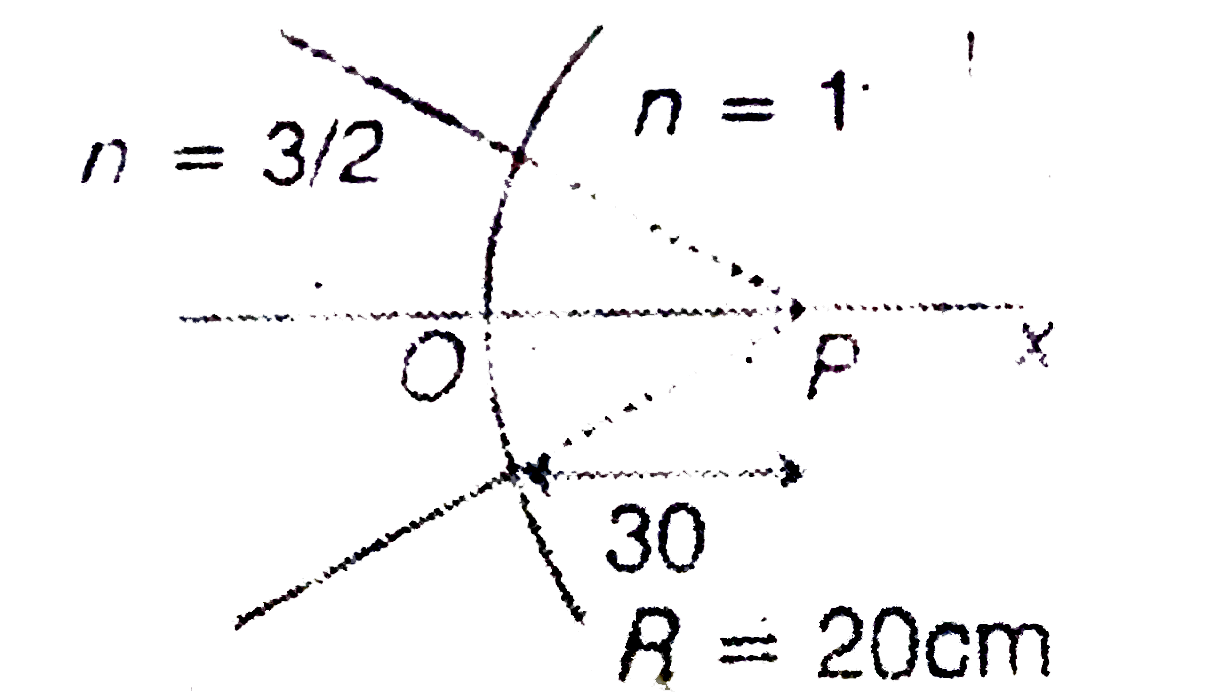
View SolutionA thin linear object of size 1mm is kept along the principal axis of a convex lens of focal length 10cm. The object is at 15cm from the lens. The length of the image is:
View SolutionA medium has `n_v = 1.56, n_r=1.44`. Then its dispersive power is:
View SolutionA Galileo telescope has an objective of focal length `100cm` and magnifying power 50. The distance between the two lenses in normal adjustment will be
View SolutionA convex lens of focal length A and a concave lens of focal length B are placed in contact. The focal length of the combination is
View SolutionTwo convex lens, of focal length 25 cm and 20 cm respectively are put in contact to form a combination of lenses. The power of combination
View SolutionWhen the distance between the object and the screen is more than `4 f`. We can obtain image of the object on the screen for the two positions of the lens. If is called displacement method. In one case, the image is magnified and in the other case, it is diminished. If `I_(1)` and `I_(2)` be the sized of the two images, then the size of the object is
View SolutionA plano-convex lens is made of glass of refractive index 1.5. The radius of curvature of its convex surface is R. Its focal length is
View SolutionAn astronomical telescope has an angular magnification of magnitude `5` for distant object. The separation between the objective and eyepiece is `36cm` and the final image is formed at infinity. Determine the focal length of objective and eyepiece.
View SolutionIn order to decrease the magnifying power of a telescope
View SolutionAn opera glass `(`Galilean telescope ) measures `9cm` from the objective to the eyepiece. The focal length of the objective is `15 cm`. Its magnifying power is
View SolutionThe numerical value of the length of Galilean telescope for normal vision is (assuming `f_0` and `f_e` as positive length)
View SolutionThe magnifying power of compound microscope in terms of the magnification `m_0` due to objective and magnifyging power `m_E` by the eye-piece is given by
View SolutionIn a simple microscope, if the final image is located at infinity then its magnifying power is:
View SolutionAn achromatic combination of lenses is formed by joining
View SolutionIn a simple microscope, if the final image is located at 25 cm from the eye placed close to the lens, then the magnifying power is:
View SolutionSTATEMENT -1: There exists two angles of incidence for the same deviation (except minimum deviation) by a prism kept is air.
STATEMENT-2: This is due to principal of reversibility of light
View SolutionSTATEMENT-1: A lens has two principal focal lengths which may be different in magnitude. STATEMENT-2: The distance of both principal focus from optical centre of lens depend on the two radii of curvature of the lens. Distance of both principal focus from optical centre a lens are same only if radii of curvature of both sides of lens are same
View Solution
Exercise questions and complete solutions for chapter GEOMETRICAL OPTICS of RESONANCE ENGLISH of Class 11